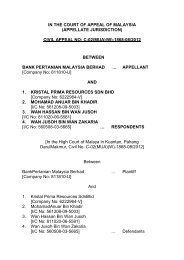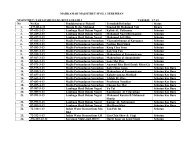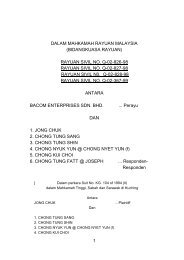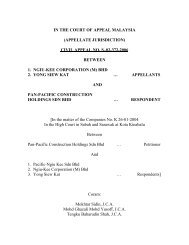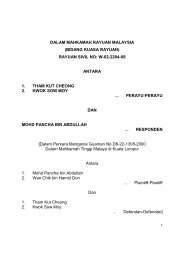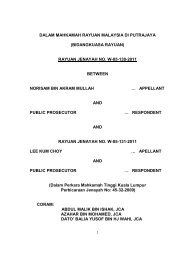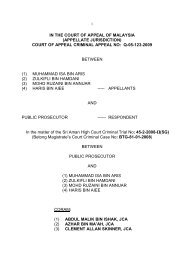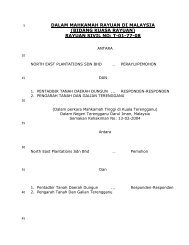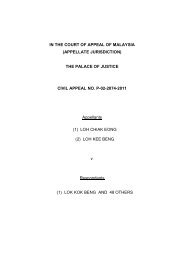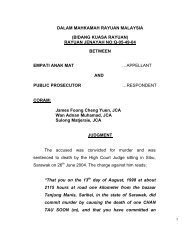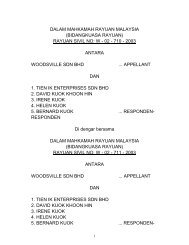rayuan sivil no: 02-39-2007 (w)
rayuan sivil no: 02-39-2007 (w)
rayuan sivil no: 02-39-2007 (w)
You also want an ePaper? Increase the reach of your titles
YUMPU automatically turns print PDFs into web optimized ePapers that Google loves.
16<br />
made it clear to the plaintiffs that it was a conditional option to become<br />
effective if the intervener-plaintiffs “failed to complete the transaction”. He<br />
explained that despite having given the first option, he nevertheless gave<br />
the second option because “as an agent I wanted a back up in case the<br />
interveners could <strong>no</strong>t proceed with the purchase of the land”.<br />
40. The learned trial judge did <strong>no</strong>t address the question of the second<br />
option being conditional on the first option. The Court of Appeal, however,<br />
said as follows:<br />
“. . . I find the learned trial judge failed to address this<br />
aspect of the case. In fact on this point evidence was led<br />
by [Raya Realti] through its witness, Rajandran a/l<br />
Kovalpichay (DW2). [See pages 333-335 of Appeal<br />
Record Volume II)]. It is my judgment had the learned<br />
trial judge adequately approached this point as an issue<br />
before him, he would have found that the facts do <strong>no</strong>t<br />
support his finding that there was a concluded contract.<br />
This is because at that point of time when the offer under<br />
the said Option was said to be made by the plaintiffs, the<br />
offer by the first and second intervener plaintiffs under the<br />
same said Option was still subsisting. It is my considered<br />
view when the condition in the said Option is <strong>no</strong>t satisfied<br />
there can be <strong>no</strong> concluded contract. [See the case of<br />
Abdul Rahim bin Syed Mohd v. Ramakrishnan<br />
Kandasamy (1966) 3 MLJ 385]”.<br />
41. The gist of the submission of the plaintiffs’ counsel on Question 2 is<br />
that the second option can<strong>no</strong>t be treated as conditional upon the <strong>no</strong>n-<br />
performance of the first option because the two options must be construed<br />
according to their terms and there was <strong>no</strong> term in the second option that<br />
provided that it was a conditional option. Counsel submitted that it was a<br />
misdirection on the part of the Court of Appeal to rely on the evidence of<br />
Rajandran to find that the second option was subject to the first option



